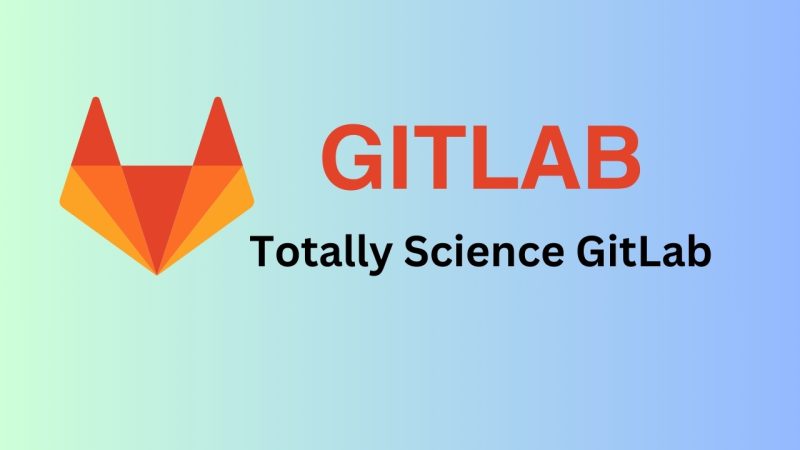Understanding Google Bard: A Comprehensive Guide
Introduction to Google Bard
There is a remarkable advance in artificial intelligence when it comes to conversational AI, and one of them is the emergence of Google Bard. It is an AI-driven chatbot that allows for natural conversations between humans and machines as well as delivering precise contextual information from the user’s perspective. This guide will take you through the intricacies of Google Bard including its functions, practicality and technology behind it.
The Evolution of Google Bard
From Conversational AI to Bard
This meant more research than ever into developing more advanced machine learning models as well as better platforms for it like this one called “Bard” which has already been built using many others such as those used by predecessors like Assistant or GPT-3. Unlike mere bots that simply carry out back-and-forth online communication activities, this complex program enables the generation and understanding of fluent human speech using sophisticated algorithms.
Technological Foundations
Google Bard operates on Transformer architecture whose BERT (Bidirectional Encoder Representations from Transformers) model forms its core. BERT helps in processing sentence-level context bidirectionally thus improving its capabilities for understanding and responding accurately.
Key Features of Google Bard
Natural Language Processing (NLP)
It relies on state-of-the-art NLP techniques to generate text that sounds just like how people talk, thus enabling different styles of discourse from casual conversation to complex requests. Its NLP capabilities allow it to handle different contexts in discussions ranging from informal talks to technical questions.
Contextual Understanding
Furthermore, one other outstanding feature of this invention is its ability to retain context for long conversations. Bard is hence in a position to give sensible and related answers even though the conversation has undergone many exchanges.
Multilingual Support
This makes it possible for Bard to be used by people in different parts of the world because they speak different languages. This is also seen as an inclusive strategy by Google that enables more people to benefit from this technology.
Here are some key points about Google Bard:
- Purpose: To make AI interaction more similar to the way humans communicate, making it more intuitive and conversational. It can help with simple queries or complex tasks.
- Technology: It is built on Google’s advanced AI and machine learning algorithms, particularly the LaMDA model. Which excels in understanding and generating human-like text based on the context of the conversation.
- Applications: These may include but are not limited to customer service, personal assistance, education and content creation purposes that use these applications extensively. Generating text, summarizing information, and translating languages among others are its language-related functions.
- Access: It might be available through various platforms and devices apart from being embedded into other Google services and products, so far many people can get access to Bard.
- Competition: Some of them include OpenAI’s ChatGPT and Microsoft’s Bing Chat among others with distinct features that make them rivals to Google Bard.
Integration with Google Ecosystem
Google Bard integrates well with other Google services thus enhancing its usability as well as functionality. Hence if you want relevant information about something you found online from Google search results you’ll find it on Google Maps too when navigating from one place to another using their direction assistance or maybe managing your work using such tools like calendars where all these experiences come together via bard as one unified user experience across multiple platforms (for example mobile phones).
The level of engagement provided by Google Bard, when compared to traditional search engines and other such programs, is significantly lower. This is because these machines are programmed to respond to only very limited forms of input.
Personal Assistant
Google Bard acts as a personal assistant for individuals, helping them with their daily tasks like reminding them of appointments, setting schedules and telling them about the weather. It can be used to handle daily activities in natural language commands making it a useful companion in everyday life.
How Google Bard Works
Data Processing and Analysis
To understand what people are saying and generate appropriate responses, it absorbs huge amounts of data. Also known as machine learning algorithms, they help analyze text inputs, pick out relevant information and answer in a manner that is both right and contextually correct.
Training and Fine-Tuning
The development of Google Bard includes training on disparate datasets so that it can identify patterns in language use. Such training enables the model to capture subtle nuances associated with human communication styles. As time goes by there will be continuous adjustments made until performance increases for all versions of Bard.
User Interaction Model
Google Bard has an advanced user interaction model that prioritizes customer experience. It learns individual user preferences and offers customized feedback which leads to better engagement levels among users.
Advantages of Google Bard
Efficiency
Responses by Google Bard are faster than ever before due to decreased turnaround times on all searches performed by its AI system. This is especially beneficial in customer service situations where response time matters.
Accuracy
Powered by advanced artificial intelligence models, Google Bard delivers highly accurate content tailored for each query entered into the system. Consequently, it ensures contextualisation as well as preciseness while responding in order for you to be given answers that are specific.
Scalability
Google’s latest invention named “Bard” possesses qualities that enable it to perform simultaneous conversations at massive scales like never before seen previously. Therefore smaller ventures looking forward towards streamlining their communication channels can rely on this technology given its capability of handling millions of exchanges at a go.
Potential Challenges and Ethical Considerations
Privacy Concerns
Google Bard, which handles large amounts of user’s data, has to prioritise privacy concerns as the most important. It is necessary for Google to ensure that users’ data is always processed and stored safely so as not to break their trust. This necessitates strict adherence by Google to robust privacy policies and regulations like GDPR (General Data Protection Regulation) in order to safeguard users’ data.
Bias and Fairness
When modelling AI platforms such as Google Bard they might end up perpetuating the biases that were found within the training datasets supplied. Therefore, regular audits and mitigation processes should be set up in place when dealing with fair answers hence avoiding biasing them. In addition, it can work towards increasing diversity in training sets used as well as making existing bias detection tools even more efficient to enhance fairness during the conversations held through Bard.
Ethical Use of AI
It is very important that we use AI ethically. This involves ensuring that applications built around Google Bard must not cause harm or other negative consequences on individuals or society at large. Examples include limiting its use in areas such as disinformation campaigns, surveillance activities or illicit data capturing.
Best Practices for Implementing Google Bard
Clear Objectives
You need clear goals on how you want to use Google Bard – do you need it for better customer relations, improved engagement with your users or just automating some tasks? By defining these objectives, implementation becomes guided accordingly.
Continuous Monitoring and Improvement
Maintaining top performance standards while adapting to dynamic user contexts necessitates a constant assessment of how well Bard is doing. The process should be accompanied by continuous training through fine-tuning whenever improvements are needed depending on changing user needs.
User Education
Guide users on how to effectively communicate with Google Bard. This can be done by specifying what kinds of questions Bard can process. And the way these queries should be phrased in order to enhance user experience.
Ethical Guidelines
Develop ethical guidelines for using Google Bard. Be sure that its use adheres to ethical standards and yields favourable results for consumers and society as a whole.
Case Studies: Successful Implementations of Google Bard
Retail Sector
One leading retailer introduced Google Bard to help their operations in customer service. Customers’ satisfaction increased while business costs were reduced since the company automated responses to common inquiries and provided unique product recommendations.
Healthcare
In the healthcare industry, a hospital incorporates Google Bard to assist patients with questions concerning any health queries and making appointments. This helped healthcare professionals focus on patient care better because Bard gave accurate information and simplified administrative tasks.
Education
For an online education platform, Google Bard was used to provide real-time tutoring and support students. This was facilitated by the fact that Bard has a comprehensive understanding of different subjects. And is able to have meaningful conversations with its users, which made it effective and efficient in the learning process.
Future Developments in Google Bard
Enhanced Contextual Awareness
Google Bard’s future iterations are expected to become increasingly contextually aware resulting in more advanced conversational versions.
Improved Multimodal Capabilities
Google is currently working on upgrading the ability of Bard to process multimodal content such as text images and videos. This will make Bard more versatile and enhance its functionality even further.
Greater Personalization
By responding based on consumer preferences, Google Bard may also offer personalised experiences in increasing measure.
Integration with Emerging Technologies
More deeply integrating with augmented reality (AR) as well as virtual reality (VR) technologies could be a possibility for Google Bard later on. These immersive user experiences will drive engagement that is higher than ever before.
Expansion into New Industries
As AI adoption becomes more popularised, it is likely that we will see Google Bard diversify into other industries. Its applications range from banking, entertainment, and transport among many others which makes it highly flexible.
Advancements in AI Research
Continuing improvements in artificial intelligence research are poised to keep boosting the capabilities of Google Bard. Progresses like natural language understanding technology advances, machine learning algorithms and data processing will power Bard’s development leading to a more powerful and efficient version.
Conclusion
Google Bard (Google Gemini) is a significant achievement in the development of conversational AI. Its advanced NLP capabilities, contextual understanding, and seamless integration with the Google ecosystem make it a key tool for communication improvement as well as automation. To this end, It should address potential challenges as well as ethical considerations. To sustain its innovative drive for better user experiences across different domains. With advances in AI technology, It will continue to shape the future of human-AI interaction through proactive initiatives in this field.
[You may also read: UNDERSTANDING CHATGPT: A COMPREHENSIVE GUIDE]





